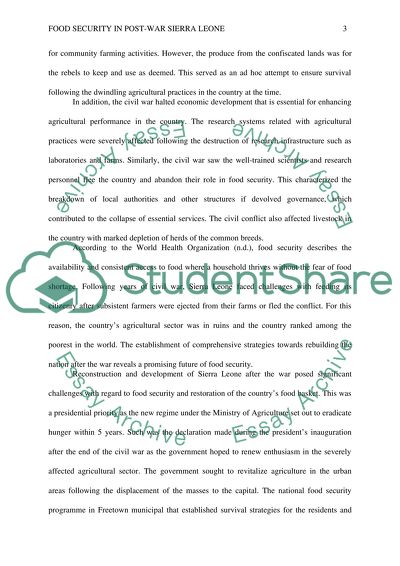Cite this document
(“Food Security in Post-War Sierra Leone Essay Example | Topics and Well Written Essays - 1500 words”, n.d.)
Retrieved from https://studentshare.org/agriculture/1482858-food-security-in-post-war-sierra-leone
Retrieved from https://studentshare.org/agriculture/1482858-food-security-in-post-war-sierra-leone
(Food Security in Post-War Sierra Leone Essay Example | Topics and Well Written Essays - 1500 Words)
https://studentshare.org/agriculture/1482858-food-security-in-post-war-sierra-leone.
https://studentshare.org/agriculture/1482858-food-security-in-post-war-sierra-leone.
“Food Security in Post-War Sierra Leone Essay Example | Topics and Well Written Essays - 1500 Words”, n.d. https://studentshare.org/agriculture/1482858-food-security-in-post-war-sierra-leone.


